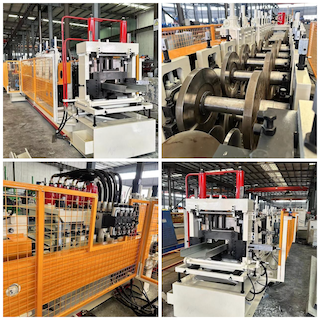To express an interest in this machine please submit the form below.

Not Sure What Machine You Need?
Select Your Profile, We'll Match It
Choose your desired profile drawing, and let Machine Matcher connect you with the best roll forming machine tailored to your needs.
Browse Profiles
Cee purlin roll forming machines are essential for manufacturing strong, durable, and versatile structural profiles used in construction and industrial projects. In the USA, these machines cater to the demand for high-quality purlins that are utilized in metal building frameworks, warehouses, and roofing applications. This article provides an in-depth look at the specifications, features, and benefits of a Cee purlin roll forming machine designed for the U.S. market.
The Cee purlin roll forming machine is a high-performance system engineered to produce Cee profiles with consistent quality and efficiency. This machine features a robust construction designed to handle heavy-duty operations while maintaining precision in forming and cutting. With a forming speed of 50–60 ft/min, it balances productivity and quality to meet the demands of American construction standards.
Its hydraulic shear cutting system ensures clean cuts without deforming the material. The Delta PLC control system allows operators to input precise specifications, making it easy to switch between different profile sizes and material gauges. Safety is a top priority, with comprehensive safety covers protecting operators from moving parts.
This machine is specifically designed for producing Cee purlin profiles with the following specifications:
Q1: What materials can the machine process?
A: The machine can process a range of materials, including galvanized steel, mild steel, and high-strength steel, with variable thicknesses.
Q2: Is this machine suitable for large-scale projects?
A: Yes, its high forming speed, robust design, and versatility make it ideal for large-scale industrial and commercial projects.
Q3: Can the machine produce profiles other than Cee purlins?
A: While primarily designed for Cee purlins, it can also produce Z purlins or other profiles with appropriate tooling modifications.
Q4: How long does it take to set up the machine for different profiles?
A: With the Delta PLC system, the machine can be reconfigured within 15–20 minutes for different profile sizes and material specifications.
Q5: What kind of maintenance does the machine require?
A: Regular maintenance includes lubrication of moving parts, inspection of the hydraulic system, and cleaning of rollers to ensure consistent performance.
Q6: Are training and installation support available?
A: Yes, the machine comes with comprehensive installation support, and training is provided to ensure operators are well-versed in its use.
Q7: What is the average power consumption of the machine?
A: The machine operates on a 32 HP motor and consumes approximately 24–26 kWh under full load conditions.
Copyright 2025 © Machine Matcher.